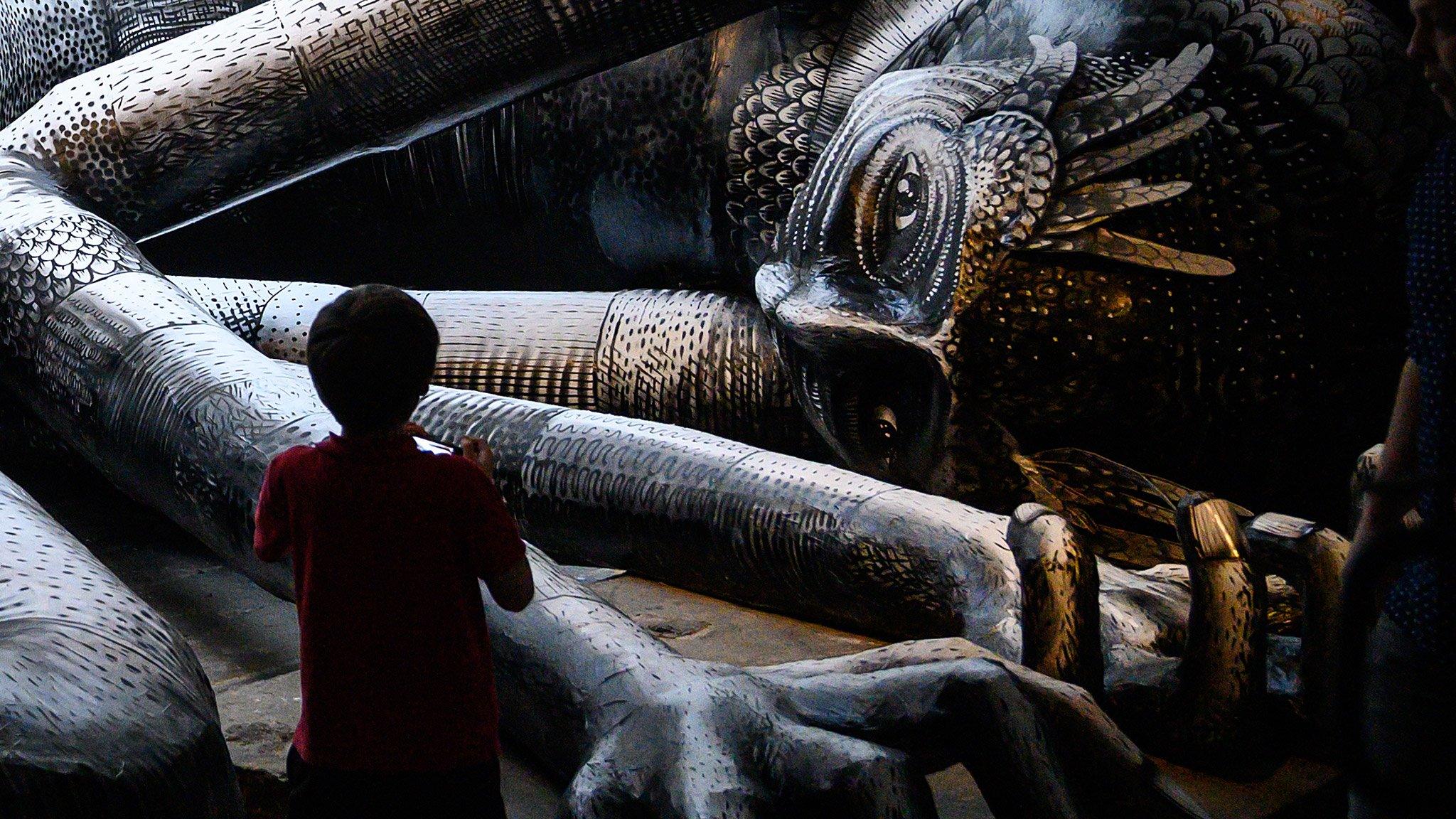Sheffield's Kenneth Steel: The famous rail travel artist you have never heard of
- Published

Kenneth Steel painted many well-known watercolour railway posters, including for Skegness for British Railways in 1956
The work of a prolific but little-known artist who produced many posters synonymous with 1950s rail travel has gone on display.
Born in 1906, Kenneth Steel was a versatile painter who was often commissioned to produce architectural sketches.
But it was his posters for British seaside resorts and other tourist destinations of the post-World War Two period that many will recognise, even if the name behind them is less familiar.
The exhibition, in his hometown of Sheffield, is the first time so many of his works will come together.
Steel's biographer Edward Yardley, who co-curated the display, said he was tutored by renowned Sheffield landscape artist Stanley Royle.
He went on to work as an engraver and, in 1932 at the age of 26, was dubbed "the year's biggest artistic find", by the Sheffield Telegraph.
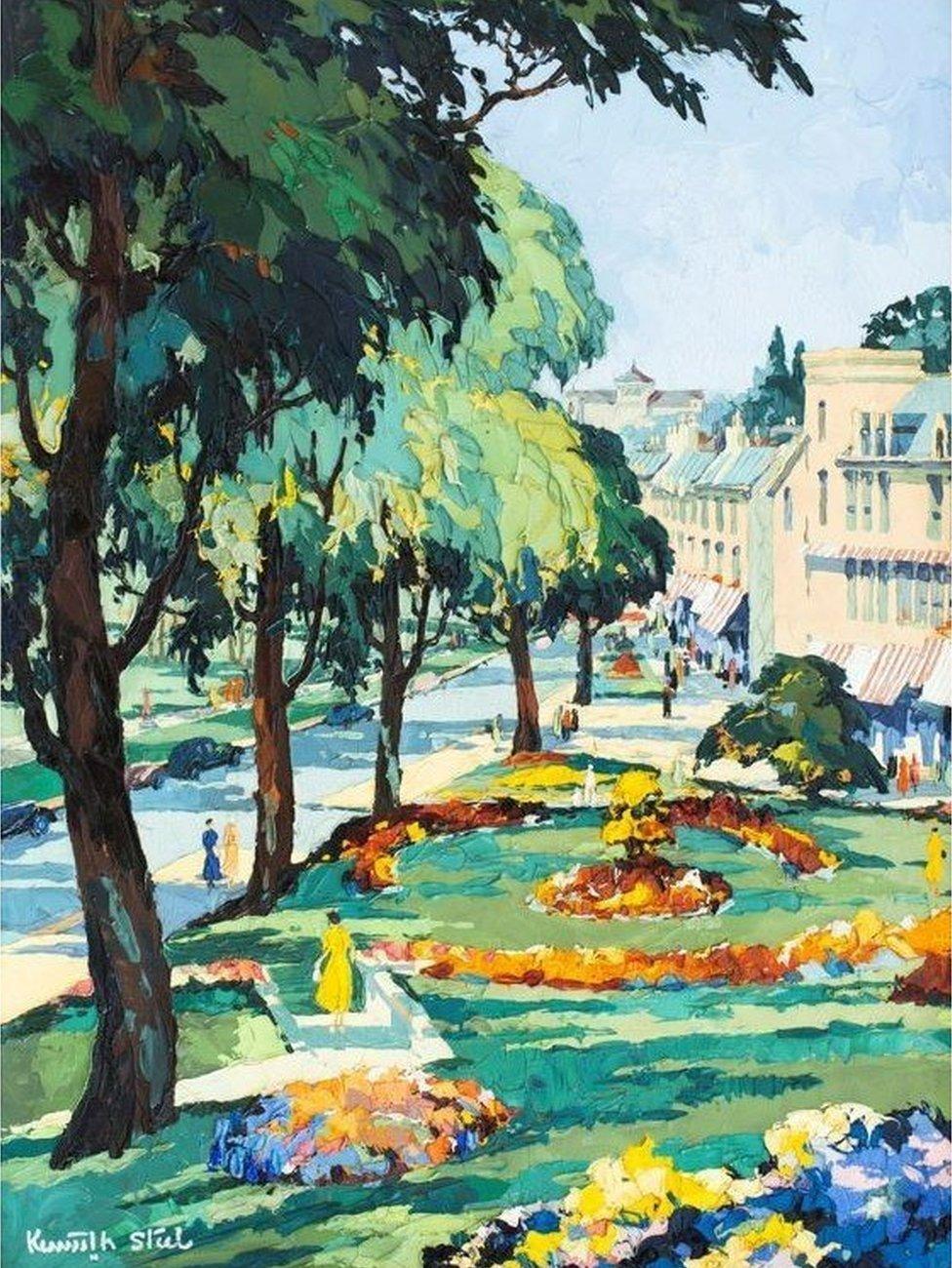
He also painted landscapes, including this one of Harrogate in 1953, having been tutored by Sheffield landscape artist Stanley Royle
Four years later, he became the youngest artist to be elected to the Royal Society of British Artists and went on to have solo exhibitions in London and Dublin in the late 1930s.
In December 1940, his mother and pregnant wife were killed in the Sheffield Blitz and the bombing destroyed much of his studio work, but he returned after the war to commercial art, producing travel posters and carriage prints.
He was later commissioned to create architectural drawings for the construction industry and local authority, such as the Brutalist concrete electricity sub-station on Moore Street in Sheffield, designed in 1965.

The concrete electricity sub-station near The Moor in Sheffield, was designed by architects Jefferson Sheard & Partners and drawn by Steel between 1965 and 1966

Now a well-used image of Sheffield Castle, the oil painting was hung in the Co-Op company boardroom and used as the Lord Mayor of Sheffield's Christmas card in 1965
One of Steel's most famous paintings in the exhibition is of the 12th Century Sheffield Castle, painted in 1964 after he was commissioned by Brightside and Carbrook Co-operative Society to paint an imaginary view of how the castle may have looked in the 17th Century.
The painting was hung in the board room at the Co-Op's head office in Angel Street, on the castle's medieval site.

Steel painted Reflections (St Mary's Church, Sheffield) in 1963, when he was 60

Steel's mother and first wife, who was pregnant, were killed in the Sheffield Blitz in December 1940
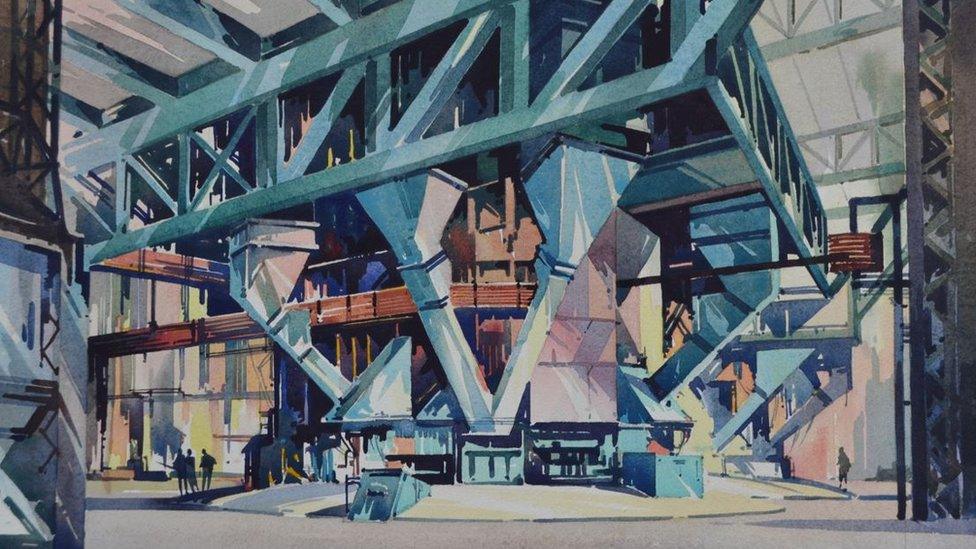
He was commissioned to paint this industrial plant in Sheffield in 1965
Mr Yardley said Steel eventually remarried in 1953 at the age of 47, and in his last 20 years produced some of his most experimental work, such as Reflections (St Mary's Church, Sheffield) in 1963.
"He was an artist who laid such importance on fine draughtsmanship and strong colour," he said.
"The sheer variety of his artistic output has long been admired by a few loyal private collectors but is largely unknown to the general public."
Steel died of lung cancer in 1970, aged 63.
Fifty years of Kenneth Steel's drawings, prints and paintings can be seen in Places in Time at Sheffield's Weston Park Museum from 17 December until 2 May.

Follow BBC Yorkshire on Facebook, external, Twitter, external and Instagram, external. Send your story ideas to yorkslincs.news@bbc.co.uk, external
All photos subject to copyright
Related topics
- Published17 November 2021
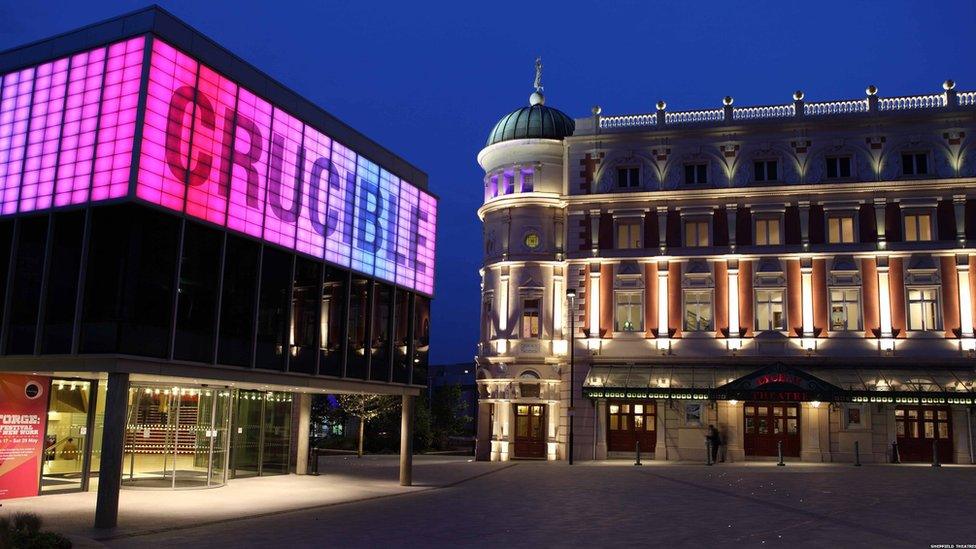
- Published10 September 2021
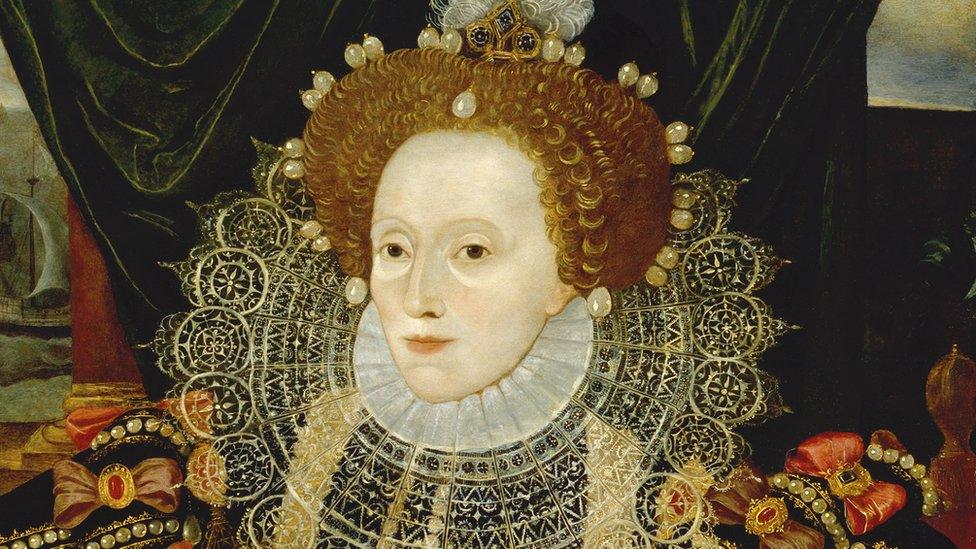
- Published10 April 2019
